Types of Retail Store Fixtures
Discover key types of retail store fixtures. Learn how shelves, racks, tables, and modular fixtures shape customer flow, product visibility, and sales.
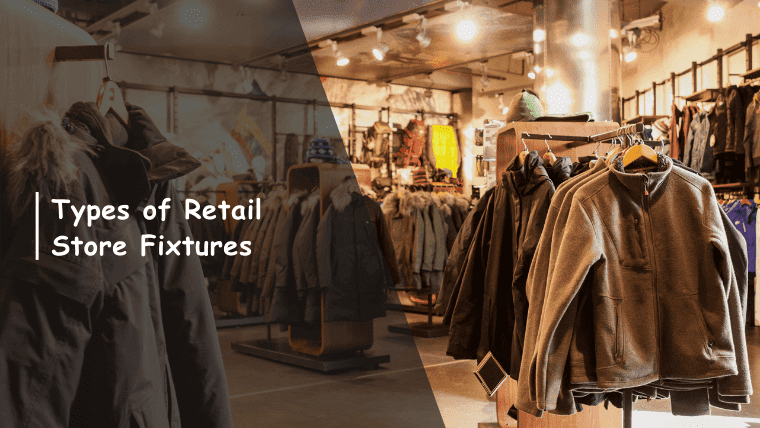
Discover key types of retail store fixtures. Learn how shelves, racks, tables, and modular fixtures shape customer flow, product visibility, and sales.

Store fixtures and displays shape how customers interact with your space. According to the Retailers Association of India, the sector grew 7% year-on-year in May 2025, reflecting a renewed focus on in-store experience.
As competition intensifies across metros and Tier-II cities, you need to rethink how your shelves, racks, tables, and other fixtures can do more than hold products. They need to tell stories, guide footfall, and reinforce brand identity.
This blog examines the primary types of retail store fixtures, assisting shop owners in creating visually appealing spaces that drive sales.
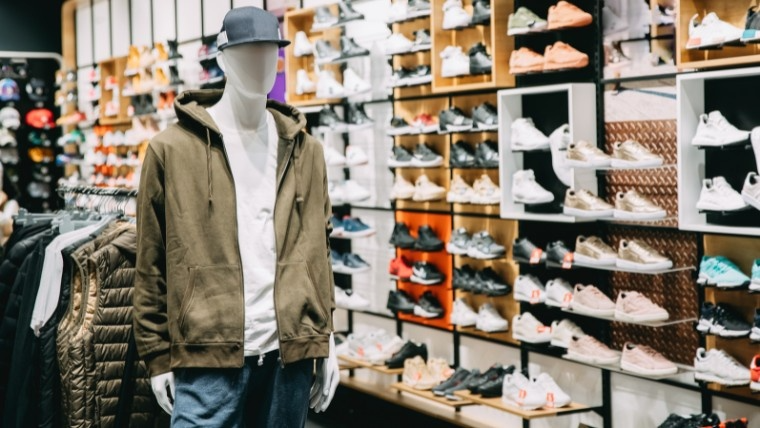
Retail store fixtures are essential tools that help organise and showcase products effectively.
Key characteristics include:
Once you understand what retail store fixtures are, it is important to break down their key components. Knowing each element helps you choose and arrange fixtures effectively, ensuring they are both functional and visually appealing for your store.

Understanding the key components of store fixtures is essential to determine their functionality, durability, and overall impact on the shopping experience.
Principle elements include:
These components work together to create functional, visually appealing, and versatile fixtures, maximising both store efficiency and customer engagement.
In the next section, we will look at the most popular types of retail store fixtures.

Choosing the right fixture for each type of merchandise ensures optimal visibility, efficient use of space, and a smoother customer journey.
These are six broad categories of fixtures commonly used in retail stores:
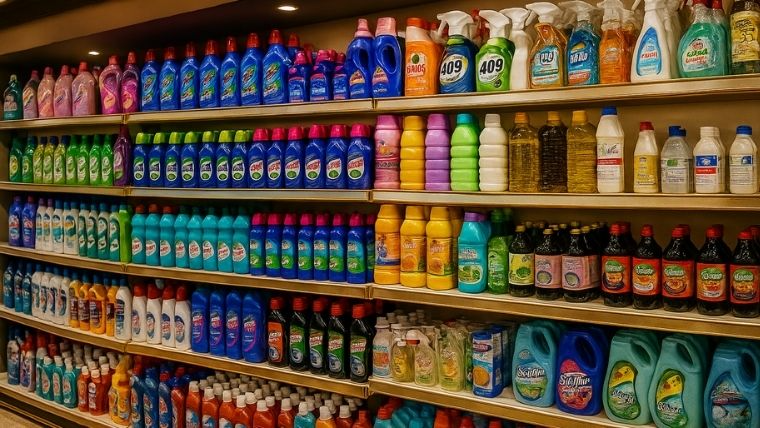
Wall-mounted shelving units are fixed directly to walls, saving valuable floor space while keeping products at eye level.
They are ideal for small items, seasonal products, or merchandise that benefits from vertical presentation. By freeing up aisles, they enhance store flow and make browsing easier.
Wall-mounted shelves from Expanda Stand provide a space-saving solution to display products efficiently. They keep merchandise at eye level, improving visibility and accessibility for customers.
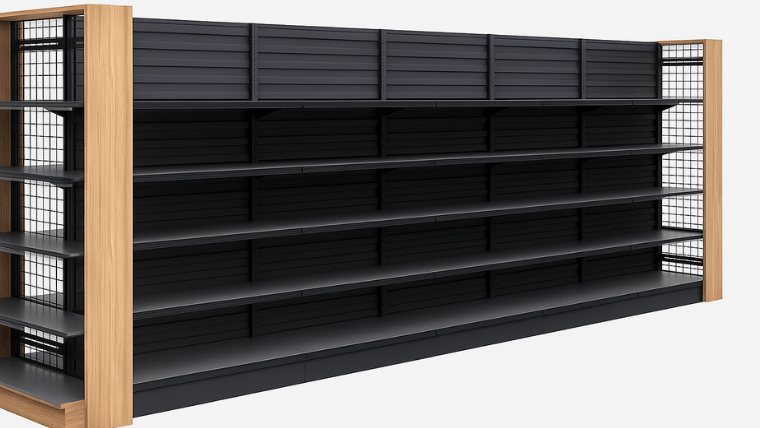
Freestanding units provide flexible storage and display options that can be rearranged as needed.
They allow merchandise to be visible from multiple angles and are suitable for a variety of product types. These fixtures are commonly placed in the centre of the store to guide customer movement.
Expanda Stand’s gondola shelving offers double-sided display options, ideal for central store placement. They increase product visibility from multiple angles while guiding customer movement through aisles.
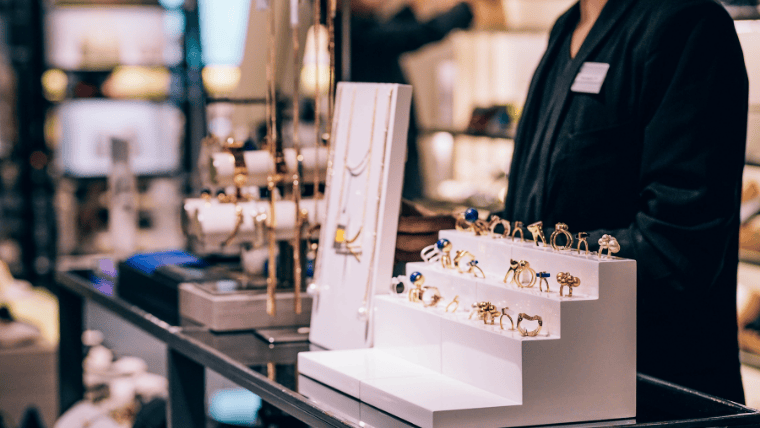
Display tables create accessible, flat surfaces for merchandising, perfect for highlighting promotions or seasonal items. They are versatile and can be positioned near entrances or along aisles to draw attention.
Tables encourage tactile engagement and make browsing easier for customers. Popular types of display tables include:
Expanda Stand offers a range of clothing display racks that are sturdy, stylish, and designed to suit different store layouts. Our racks help maximise floor space while keeping your garments visible and accessible.
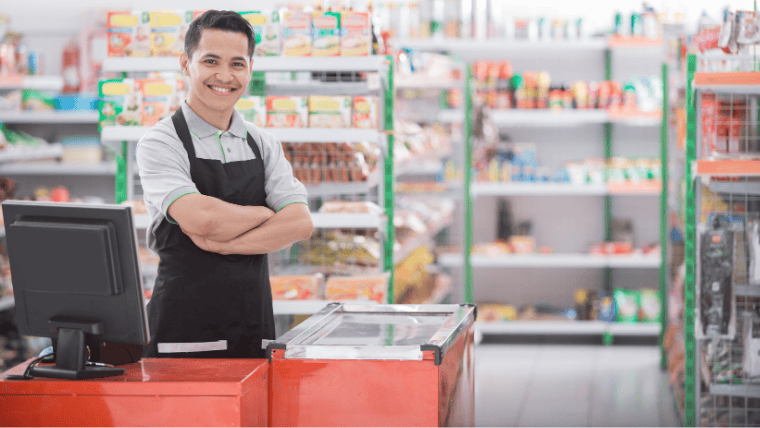
Checkout counters combine transactional functionality with merchandising opportunities. They provide a last-minute touchpoint to promote impulse purchases and reinforce brand presence. Counters are essential for almost every retail store format.
With Expanda Stand, you get POS checkout counters, billing stations, and integrated peripheral units that optimise transaction flow and showcase impulse items effectively. Our solutions combine durability, modular design, and branded finishes to improve the customer experience.
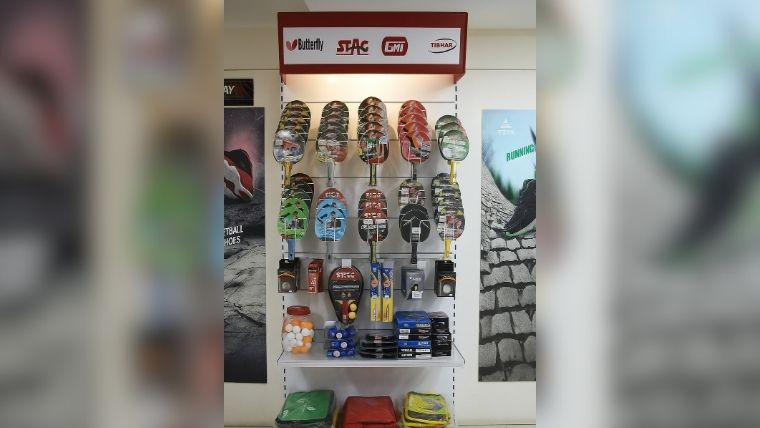
Gridwall and pegboard systems are versatile, vertical display solutions that allow hooks, baskets, or shelves.
They are ideal for stores with rapidly changing inventory and seasonal promotions. These fixtures can adapt to different product types while maximising wall space.
Gridwall systems by Expanda Stand are perfect for sports stores, apparel, accessories, or gift stores. You can easily hang products, hooks, and baskets, making it easy to organise merchandise efficiently. Their modular design adapts to changing inventory and seasonal promotions.

Speciality fixtures include purpose-built units for specific product types or store formats. Modular fixtures offer adaptability for different product ranges, seasonal changes, or store layouts. These enhance visual merchandising while improving store efficiency.
At Expanda Stand, we custom-measure every fixture to fit your store perfectly, ensuring optimal capacity while keeping products accessible. Our high-quality, well-finished racks are among the best in India and are also exported to various countries worldwide.
In the next section, we outline the key factors to consider when selecting a retail store fixture.
Suggested Read: 5 Key Factors to Consider When Designing Your Retail Store’s Display Systems
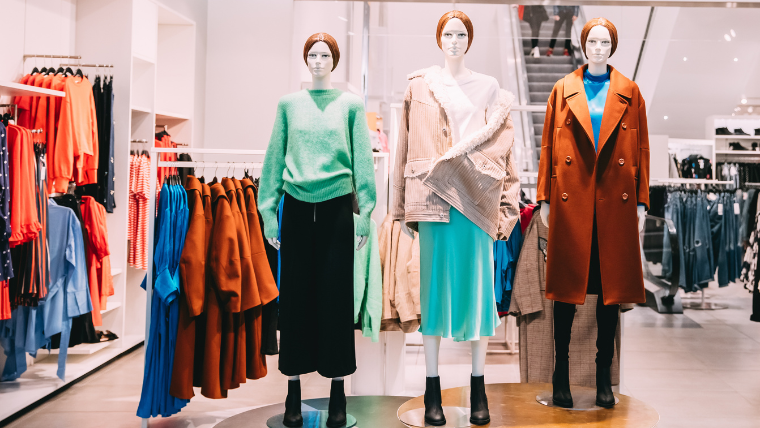
Selecting the right fixtures is crucial for creating an effective retail environment. The right mix should enhance the shopping experience and also drive sales by making products accessible, attractive, and easy to browse.
Consider these key factors when planning your store layout:
With the right combination of fixtures in place, the next step is to ensure your store layout actually drives sales.
Understanding how to arrange products, optimise traffic flow, and highlight key items can turn a well-merchandised space into a high-performing retail environment.
Suggested Read: Challenges of Retailing in India: Common Issues Explained
A well-planned store layout drives customer flow, increases dwell time, and ultimately increases sales. Small changes in product placement, fixture arrangement, and aisle design can significantly impact shopper behaviour.
Here are technical strategies to consider:
Once you have a layout that guides customers effectively and highlights key products, the next step is managing the costs of bringing that plan to life. Smart fixture choices and budgeting ensure you get maximum impact without overspending.
When setting up or revamping a retail store, fixture costs can quickly add up. Smart planning and strategic choices can help you reduce expenses without compromising style.
Here are practical ways to manage your budget effectively:
With the right store fixtures in place, Expanda Stand can help you achieve these goals efficiently. We offer modular racks, versatile shelving, and eye-catching POS fixtures that can integrate into your optimised store layout.
Suggested Read: Popular Retail Store Colour Ideas (With Tips and Examples)
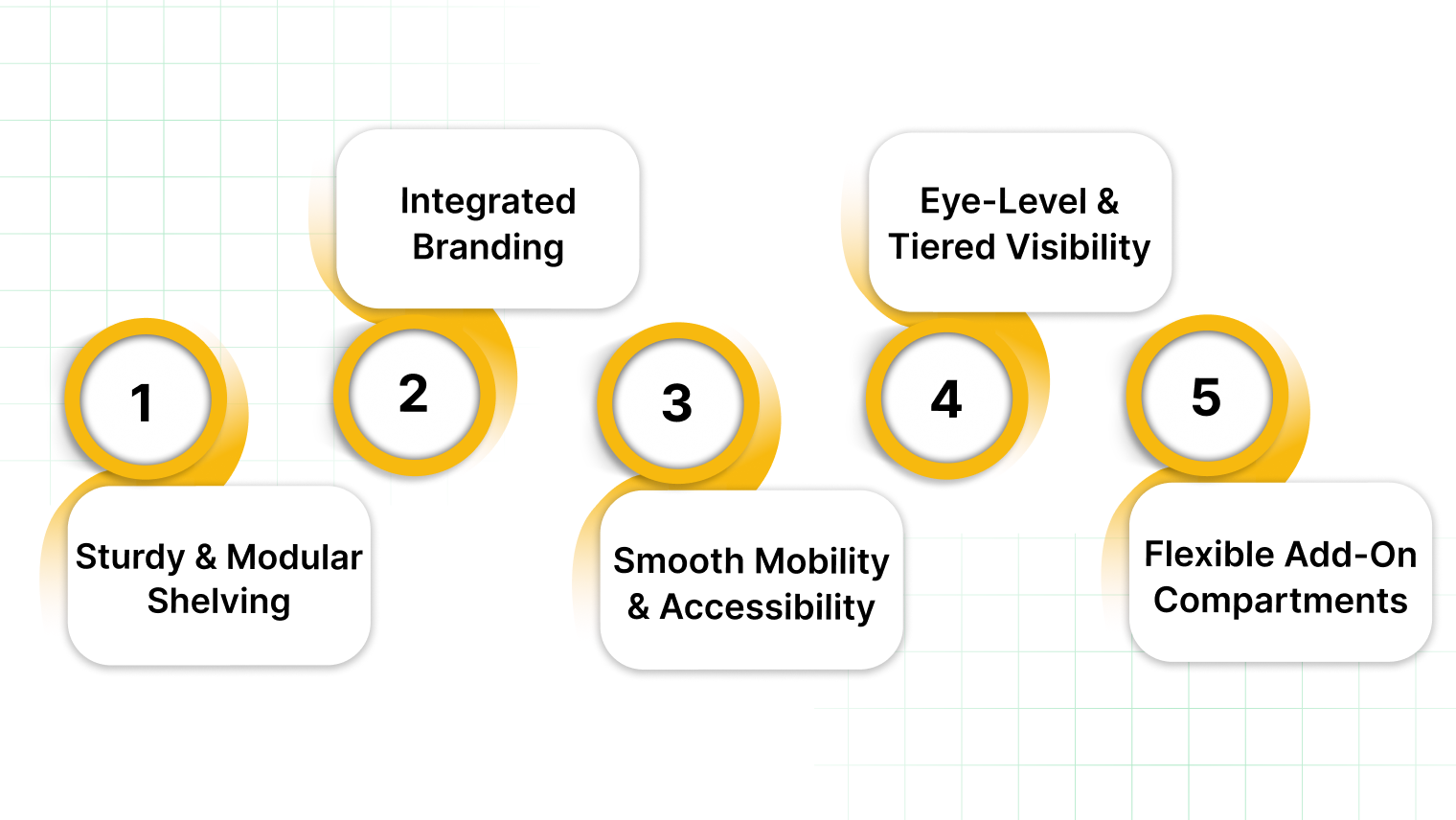
Creating a high-performing retail space is about more than placing products on shelves. It is about features that guide customers, enhance visibility, and drive engagement.
Expanda Stand designs retail displays and fixtures with thoughtful features that make these outcomes achievable. These are a few reasons for choosing us:
Shelves built for weight and flexibility allow you to rearrange products easily and highlight promotions or seasonal lines.
Customers can browse comfortably, and high-margin items get optimal visibility. Expanda Stand’s racks and towers provide both stability and adaptability to suit all retail needs.
Built-in areas for brand colours, signage, and promotional messages keep store fixtures visually cohesive and aligned with marketing strategies.
This creates an immediate brand impression and highlights key products. Many Expanda Stand units, such as POS counters, include surfaces for logos or messaging, enhancing visibility and customer recall.
Features like caster wheels or lightweight components ensure retail fixtures can be moved effortlessly and accessed from all sides.
This makes store management easier while allowing customers to interact comfortably with products. Expanda Stand multi-tier racks and towers are designed for smooth repositioning without compromising stability.
Products displayed at multiple heights draw attention to featured items and optimise space usage. You can guide the shopper’s eye naturally, improving engagement and conversions.
Multi-level racks and endcap units from Expanda Stand take advantage of this principle to make merchandising more effective.
Additional compartments or hooks allow you to feature complementary items or rotate fixtures quickly for promotions. These compartments support cross-selling and keep displays fresh. Expanda Stand units make it easy to refresh product arrangements without disrupting store flow.
We have over 25 years of experience helping retailers across different categories. Our feature-focused designs ensure your store meets customer expectations while driving measurable results.
Suggested Read: Retail Store Layout and Floor Plan Ideas
Without the right store fixtures, even high-quality products can go unnoticed, reducing customer engagement and lost sales opportunities. Poor layout, low visibility, or cluttered arrangements can significantly impact your store’s performance.
Expanda Stand excels at solving these challenges, offering versatile solutions like modular racks, multi-tier garment displays, POS units, and endcap fixtures. Each product is designed to enhance visibility, guide shoppers, and drive sales effectively.

Contact us today to explore solutions tailored to your space and merchandising goals.
Consider product size, store layout, and customer flow. Evaluate durability, adaptability, and visual appeal to ensure fixtures complement both merchandise and shopping experience while supporting sales objectives.
Yes, adjustable shelves allow easy rearrangement for new collections, promotions, or seasonal items, helping maintain visual appeal and optimise product visibility without needing permanent renovations.
Lighting draws attention to key products, highlights textures and colours, and creates the right mood. Proper illumination increases engagement and encourages purchases while improving overall store aesthetics and brand perception.
Placing low-demand items, overcrowding, or neglecting eye level can reduce impact. Effective endcaps focus on high-visibility products, promotional items, or bestsellers to drive impulse purchases.
Expanda Stand offers modular racks, multi-tier fixtures, and flexible POS units that optimise space, highlight products effectively, and allow easy reconfiguration to support changing inventory and promotional needs.
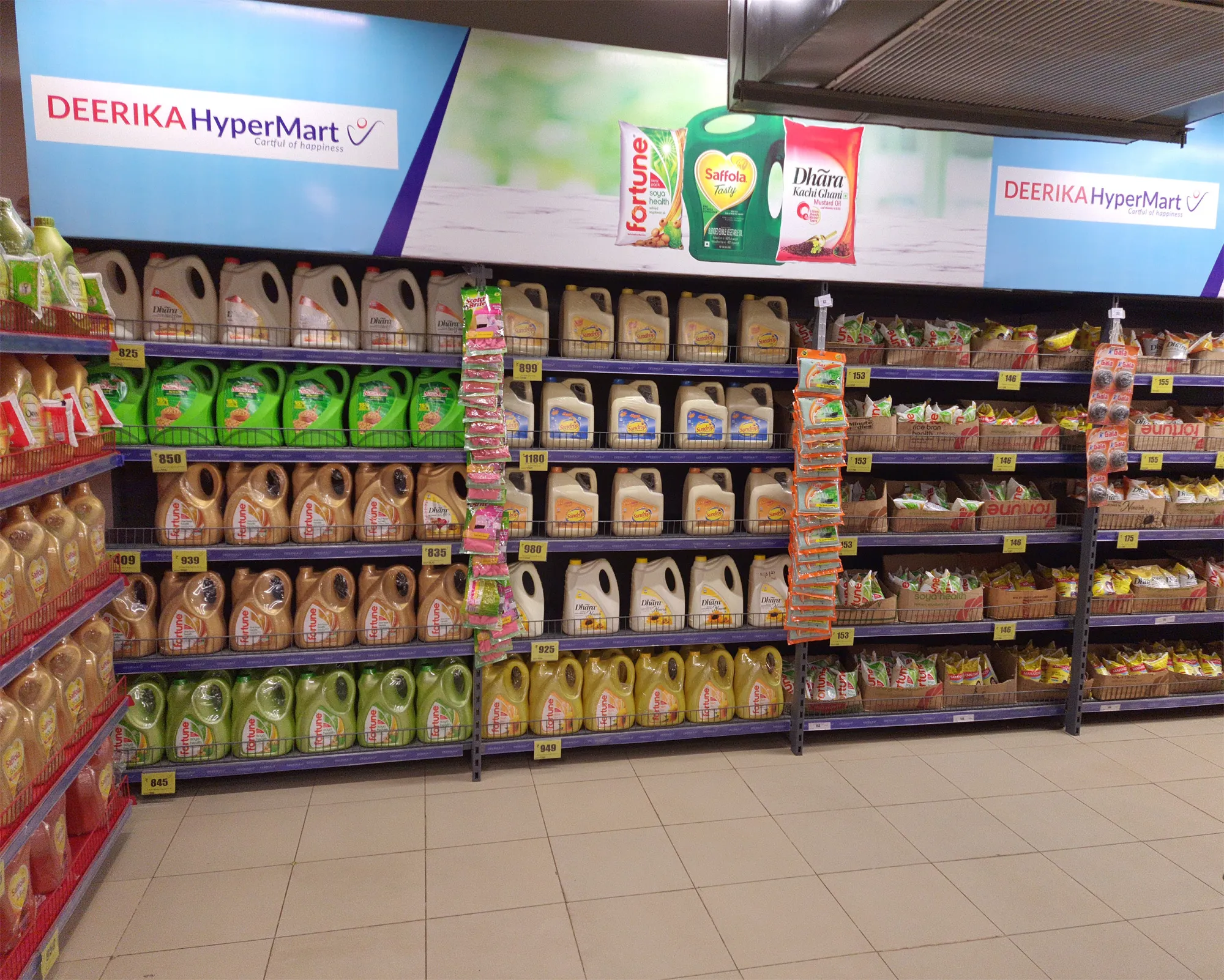
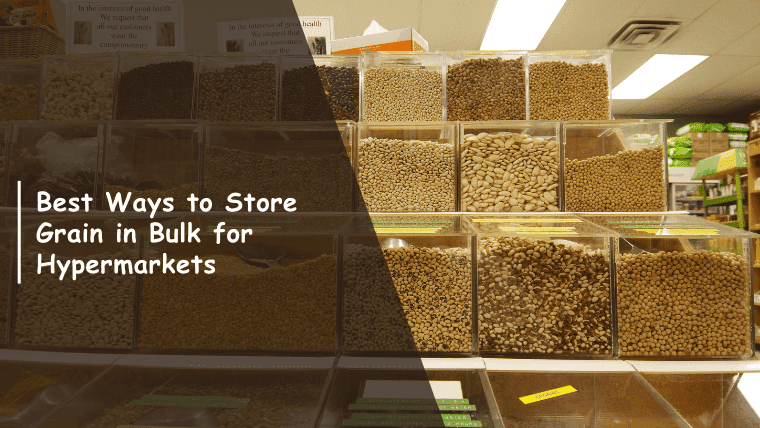
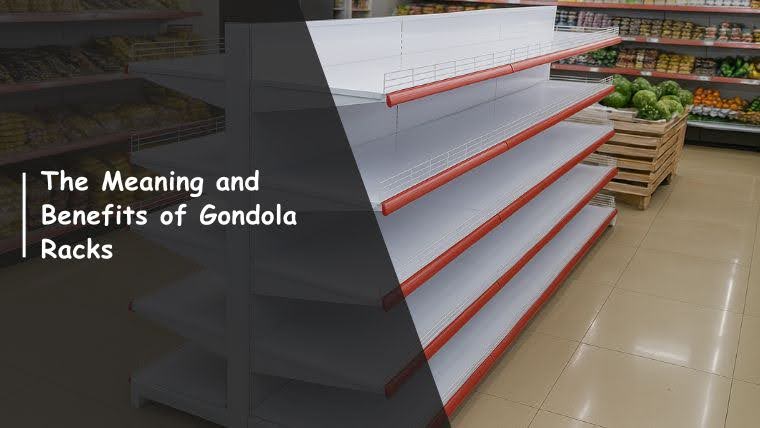
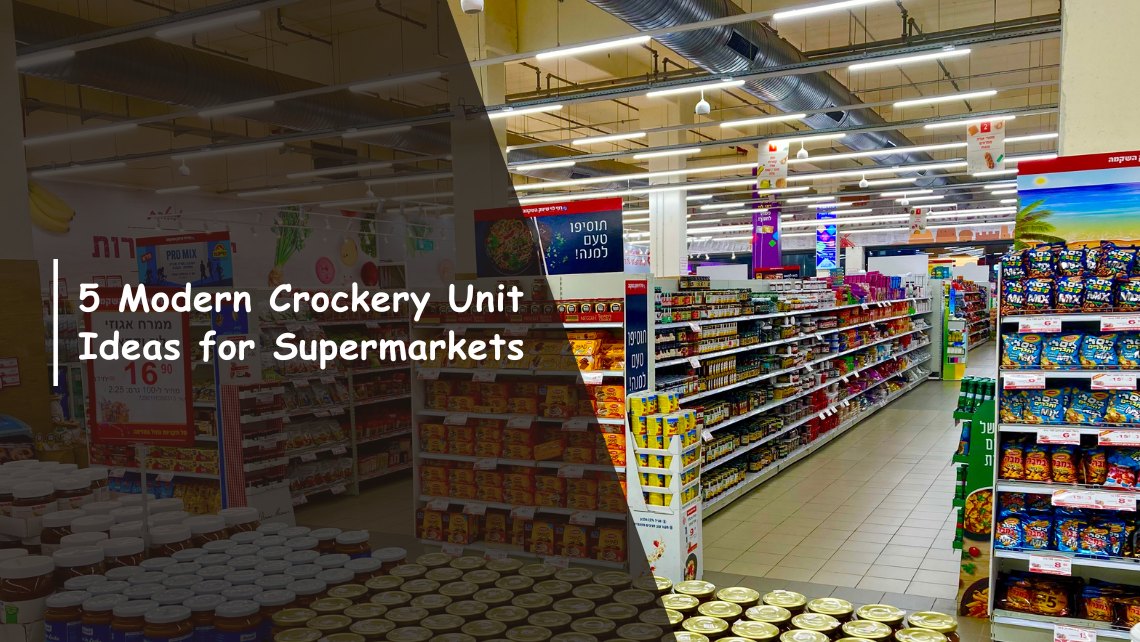
Ready to Upgrade Your Process Operations?